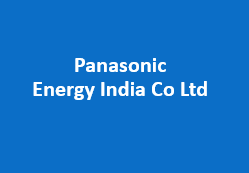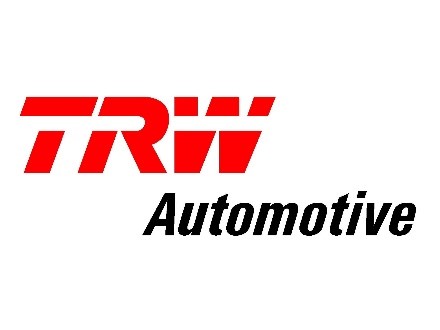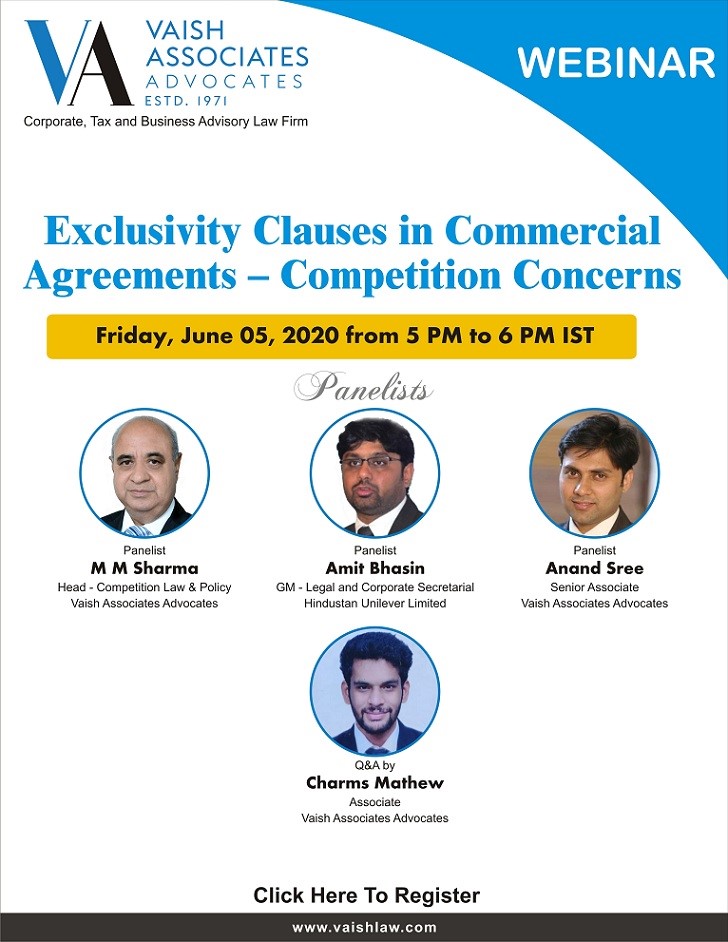CCI holds “mere” discussion on price increase amongst competitors ,without actual implementation , no cartel – dilutes standard of proof in cartel case- Holds no cartel amongst flashlight makers despite leniency applications



The Competition Commission of India (‘CCI/Commission”) in a significant shift from its earlier tough stand on cartels has held that mere discussion to increase prices amongst competitors cannot constitute cartel ,if such decision to increase prices , in not implemented in the market . It has been now laid down that mere exchange of strategic information does not conclude co-ordination between competitors , though it indicates possibility of collusion and can also be considered as a “plus factor” to constitute evidence of co-ordination . The unique market conditions ,such as , inconsistent market shares of most players and declining demand of the product, were taken into account while deciding upon the effect of anti competitive conduct of the parties on competition in the market.
CCI vide a recent order dated 6.11.2018 , disagreeing with the findings arrived by the Director General (DG) during investigation , exonerated four manufacturers of battery operated flashlights , Eveready Industries India Limited(“EIIL/ OP-1”) , Panasonic Energy India Co. Ltd. (“PEIL/ OP-2) ”) , Indo National Ltd (“INL/ OP-3”) and Geep Industries (India) Pvt. Ltd. ( GIIL/ OP-4”) along with the Association of Indian Dry Cell Manufacturers ( “AIDCM/ OP-5”) (“Opposite Parties/ OPs”) , of cartelization , citing insufficient evidence to show that the cartel did in fact result in determining the prices of flashlights[1], despite two Leniency applications filed by OP1 and OP2 , admitting exchange of strategic information and even discussion and decisions to raise prices amongst the OPs.
The CCI held that, though there was evidence of exchange of production/ sales data, draft press release and price information amongst OPs indicating possibility of collusion, there is hardly any evidence to show that such activities of OP-1, OP-2 and OP-3 did in fact result in determining the prices of flashlights. Further, there is no information or evidence in the case to establish that the agreement depicted by the e-mail exchange in March 2012 was acted upon by the OPs. Even OP-1, who disclosed the alleged anti-competitive behaviour of the OPs could not provide any definite evidence of increase in prices of flashlights due the conduct of the OPs.
Ergo, in the absence of sufficient cogent evidence, it was concluded by the commission that OP-1, OP-2, OP-3 and OP-5 has not formed a cartel and has not acted in a concerted manner to directly or indirectly determine purchase or sale price of flashlights in violation of the provisions of Section 3(3)(a) of the Act.
Facts
The proceedings before the CCI were initiated suo motu, pursuant to the application filed by OP-1 under Regulation 5 of the Competition Commission of India (Lesser Penalty) Regulations, 2009 (the ‘Lesser Penalty Regulations’) read with Section 46 of the Competition Act, 2002 ( the ‘Act’) . OP-1 in its Lesser Penalty Application submitted that there was exchange of strategic information pertaining to sales and production of flashlights through the medium of an association i.e., Association of Indian Dry Cell Manufacturers . It was alleged that the details of production and sales data were being provided to the AIDCM by OP-1, OP-2 and OP-3 on monthly basis from year 2008 till 2016, while the exchange of data with OP-4 was only till April 2012. Further, OP-1 also revealed instances of communication amongst OP-1, OP-2 and OP-3 whereby information in relation to intended price increase or market information in relation to prices, discount schemes, etc. was exchanged amongst them regarding the product ‘flashlights’ to monitor the activities of competitors in the market in contravention of the provisions of Section 3(3) read with Section 3(1) of the Act.
Subsequently, OP-2 also filed Lesser Penalty Regulations, disclosing the evidence of information exchange in relation to sale of flashlights between OP-1, OP-2 and OP3 through OP-5, discussions at meetings of OP-5 on the state of the market for flashlights and direct communication between OP-1, OP-2 and OP-3 discussing competition in the market for flashlights in India.
Accordingly, the Commission, vide its order dated 08.02.2017 passed under Section 26(1) of the Act, directed the Director General (the ‘DG’) to conduct an investigation into the matter and submit an investigation report.
Finding of the DG Report
During investigation, the DG examined the documentary and electronic evidence furnished by the OPs including emails and other incriminating material and documents including a draft “press release” submitted with the Lesser Penalty Application along with the responses to the notices of the DG. Further, the DG also recorded the statements on oath of certain individuals of the OPs as well as the association AIDCM.
DG considered three types of evidence i.e. (i) evidence of sharing of data of flashlights, (ii) evidence of draft press release and (iii) evidence of exchange of commercially sensitive information. In relation to the compilation and sharing of sales and production data by OP-5, the DG confronted the minutes of the AIDCM meeting held on 19.04.2016, containing the year-wise sales of various types of torches by OP-1, OP-2 and OP-3 for the years 2012-13 to 2015-16, to the concerned persons of OP-1, OP-2, OP-3 and OP-5. From the statements of the said concerned persons, the DG concluded that the exchange of data on production and sales of flashlights enabled OP-1, OP-2 and OP-3 to monitor each other’s market shares in the organized market of flashlights in India, which facilitated collusion in the flashlights market. From the emails exchanged, the DG concluded that the OPs had a clear agreement/ understanding to increase prices of dry cell batteries and flashlights and had planned to announce a “press release” announcing price increase through AIDCM. The argument that the intended press release on price increase was not implemented (so as to ‘avoid attention’ of the Competition Commission of India) was found inconsequential by the DG as the existence of agreement/understanding among the parties for concerted price increase of flashlights remained undisputed.
Conclusively, the DG, observed that the OPs , through the platform of OP-5, used to share production and sales data of all the three types of flashlight/torches i.e. brass, aluminum and plastic on monthly basis, which enabled them to monitor inter se market share in the organized market of flashlights in India. Further, the documentary/ e-mail evidences regarding exchange of commercially sensitive information among OP-1, OP-2 and OP-3 established concerted practice within the meaning of ‘Agreement’ under the Act. Moreover, the e-mail exchange in March 2012 regarding announcement of price increase of flashlights through the draft press release by AIDCM established the existence of ‘Agreement’ among OP-1, OP-2 and OP-3 to determine price of flashlights in the domestic market in contravention of the provisions of Section 3(3)(a) read with Section 3(1) of the Act.
With respect to OP-4, the DG noted that it was a member of AIDCM and used to provide monthly data to AIDCM till mid-2012. However, once it ceased to be a member of AIDCM, it discontinued the practice. The DG did not find any evidence that OP-4 indulged in any concerted/ strategic decision to raise price of flashlights as was done by other OPs. Further, no other evidence of sharing of commercially sensitive information with regard to flashlights could be found against OP-4.
With respect to AIDCM (OP-5), the DG found that it facilitated cartel activities amongst its members by providing a convenient platform for sharing /discussing prices and other commercially sensitive issues on the pretext of discussing the market conditions. Further, by collating and providing regular information on production/sales data of the member companies, it provided information that assisted the Manufacturers in monitoring the cartel implementation. Ergo, the DG concluded that OP-1, OP-2, OP-3 and OP-5 had indulged in anti competitive agreement/ conduct and concerted practices, in the domestic dry cell battery market of zinc carbon batteries, during the period 20.05.2009 to 31.07.2016 and thereby contravened the provisions of Section 3(3)(a) read with Section 3(1) of the Act.
Analysis by the Commission
The Commission observed that the e-mail exchange and statements of the concerned persons disclosed that OP-1, OP-2 and OP-3 had arrived an agreement amongst themselves to increase prices with respect to not only dry cell batteries but also flashlights. Further, there appeared to be an understanding amongst OP-1, OP-2 and OP-3 to give effect to increase in prices of flashlights. However, the last e-mail dated 26.03.2012 from Mr. Suvamoy Saha to Mr. Kumaraswami on 26.03.2012 with a copy to Mr. R. P. Khaitan and Mr. S. K. Khurana indicated that the said agreement was not implemented.
In order to ascertain whether the agreement to increase prices was implemented by the OPs individually, the Commission perused at the ‘exchange of commercially sensitive information’ which included (i) printed notes of Mr. R. P. Khaitan of OP-3 , whereby he was seeking information from OP-1 regarding pricing, wholesale price, margins and promotional schemes adopted by it and (ii) an e-mail exchange amongst OP-1, OP-2 and OP-3 regarding entry of new player Godrej in the market. The Commission observed that the printed notes of Mr. R. P. Khaitan and statements of concerned persons of OP-1 and OP-3 thereon depict exchange of commercially sensitive information amongst OP-1 and OP-3 regarding pricing of OP-1’s products. However, these notes and statements do not establish that the concerned persons agreed upon the actual terms of increasing or determining prices. Further, the prices discussion amongst OP-1 and OP-3 did not categorically establish that they fixed prices. Further, the e-mail exchange amongst OP-1, OP-2 and OP-3 shows that these OPs were monitoring new entry into the market of flashlights, but all these did not establish contravention of the provisions of the Act.
Thus, the Commission concluded that though there was evidence of exchange of strategic information related to production/ sales data, a draft press release announcing price increase and price information amongst OPs indicating possibility of collusion, there was hardly any evidence to show that such activities of OP-1, OP-2 and OP-3 did in fact result in determining the prices of flashlights. Further, there was no information or evidence in the case to establish that the agreement depicted by the e-mail exchange in March 2012 was acted upon by the OPs. Even OP-1, who disclosed the alleged anti-competitive behaviour of the OPs in the instant case, expressed inability during the course of hearing to provide any definite evidence of increase in prices of flashlights due the conduct of the OPs. However, CCI did not agree with the contention of OP 2 that it was a case of single continuous infringement forming part of the earlier case of the cartel of dry cell batteries i.e suo motu case no. 02 of 2016 because OP 2, did not disclose the fact of collusion with other players on flashlight market in the earlier case in which it received 100% waiver on penalty.
Thus, in the absence of sufficient cogent evidence, the CCI concluded that it cannot be concluded that OP-1, OP-2, OP-3 and OP-5 formed a cartel and acted in a concerted manner to directly or indirectly determine purchase or sale price of flashlights in violation of the provisions of Section 3(3)(a) of the Act.
Comment: The above order is the first among the series of three recent similar orders passed by the CCI closing the allegations of anti-competitive behavior despite contrary findings by the DG during investigations . Incidentally, under the scheme of the Act , there is no remedy of appeal available against such closure orders passed by DG where , after hearing the charged parties during the inquiry , conducted under section 26(8) of the Act, CCI closes the allegations disagreeing with the findings during investigations . I call such “orders” issued by CCI (without mentioning the section of the Act ) as “grey area” cases!
Out of the three ( blogs on the two others being brought out soon) this order stands out as jurisprudentially important because ,firstly, it is the first time that CCI has closed the case initiated by it on the basis of leniency applications filed by two out of three market players in a tight oligopoly, secondly, because ,again it is perhaps, the first time that CCI has taken note of the unique market conditions ( inconsistent market shares of majority of players and declining demand of the product resulting into progressive declining profits) while deciding upon the conduct of the parties , thirdly, because the CCI has , for the first time , distinguished between the existence of a “cartel” and its actual effect on the market i.e. whether or not such cartel did actually determine prices in terms of section 3(3)(a) of the Act, and fourthly, for the first time the Commission has sought to lay down some guidelines on the extent of culpability in the exchange of strategic business information amongst competitors , thereby , differing and diluting to a large extent , in my view , the EU Guidelines on exchange of information between competitors[2] , and lastly, CCI has relied upon precedents from its own orders, distinguishing mens rea from actus reus .
[1] Flashlights is a portable device that provides light and runs on batteries .
[2] EC Guidelines on the applicability of Article 101 of the TFEU to horizontal co-operation agreements ( 2011/C 11/01)- under the sub heading Characteristics of the Information Exchange – It refers to only 6 criteria to judge exchange of information between competitors (i) Strategic information -data that reduces strategic uncertainties in the market (ii) market coverage (iii) Aggregated/individualized data (iv) Age of data (v) Frequency of the information exchange, and (vi) public/non -public information. (Most relevant Paragraphs are 86 to 94 and the assessment thereof in Para 95 to 104)








